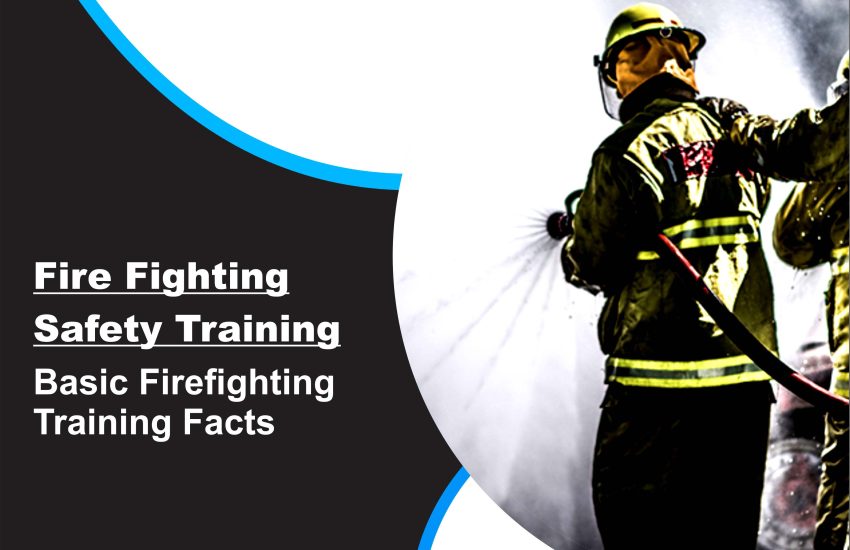Basic Firefighting Training Facts Fire emergencies can occur at any time and in any environment, making basic firefighting training essential for both professionals and civilians. Whether you’re working in an office, warehouse, industrial plant, or public institution, fire safety training equips you with the knowledge and skills to prevent, respond to, and mitigate fire-related hazards effectively.
In this article, you’ll learn the most important firefighting training facts, including key components, firefighting techniques, and how this training helps save lives and protect property.
What Is Basic Firefighting Training?
Basic firefighting training is a structured program designed to teach individuals how to safely and effectively respond to fire emergencies. It includes both theoretical and practical instruction on identifying fire hazards, using firefighting equipment, and executing emergency procedures.
Participants learn:
- Types of fires and fire classifications (Class A, B, C, D, and K)
- Use of fire extinguishers
- Fire prevention strategies
- Evacuation planning and execution
- Basic fire suppression techniques
- Personal safety and protective equipment usage
This training is often required in workplaces as part of occupational health and safety protocols.
Key Components of Firefighting Training
To ensure a comprehensive understanding, basic firefighting training typically covers several critical components:
1. Fire Behavior and Causes
Understanding how fires start, spread, and grow is crucial. Trainees learn about fire triangles (heat, fuel, oxygen) and how interrupting these elements can stop a fire.
2. Types of Fire Extinguishers
Different types of fires require different extinguishing agents. Training includes hands-on experience with:
- Water-based extinguishers (Class A)
- Foam extinguishers (Class A and B)
- CO2 extinguishers (Class B and electrical fires)
- Dry chemical extinguishers (multipurpose)
3. Proper Use of Firefighting Equipment
Participants receive instruction on using hoses, fire blankets, extinguishers, and alarms. Realistic simulations help improve reaction time and decision-making during emergencies.
4. Emergency Evacuation Procedures
Training emphasizes the importance of clear evacuation routes, assembly points, and communication during fire incidents. Trainees also practice rescue techniques and assisting individuals with disabilities.
5. Personal Protective Equipment (PPE)
Wearing the right firefighting gear, including helmets, gloves, fire-resistant clothing, and breathing apparatus, ensures safety during real-world fire scenarios.
Importance of Basic Firefighting Training
Enrolling in basic firefighting training provides numerous benefits:
- ✅ Enhanced Fire Safety Awareness: Participants become more alert to fire hazards and risk-prone areas.
- ✅ Faster Emergency Response: Trained individuals can act immediately, potentially reducing damage and casualties.
- ✅ Improved Workplace Safety: Businesses reduce liability and comply with fire safety regulations.
- ✅ Life-Saving Knowledge: Knowing how to properly use a fire extinguisher or execute an evacuation can save lives.
Moreover, in high-risk industries such as construction, manufacturing, aviation, and oil & gas, this training becomes a critical part of daily operations.
Who Needs Firefighting Training?
While firefighters receive extensive professional training, basic fire safety training is recommended for:
- Employees and staff in all industries
- School and university personnel
- Healthcare workers
- Public service employees
- Security and maintenance teams
- Homeowners and property managers
Any individual responsible for safety and emergency preparedness should undergo regular fire safety training sessions.
Fire Safety Regulations and Standards
Training programs typically align with national and international fire safety standards, including:
- NFPA (National Fire Protection Association)
- OSHA (Occupational Safety and Health Administration)
- ISO 45001 (Occupational Health and Safety Management Systems)
Organizations must ensure that their training provider follows these standards for compliance and effectiveness.
Conclusion
Understanding the facts about basic firefighting training can make a life-saving difference. Whether you’re a safety officer, a business owner, or just a concerned citizen, investing time in fire safety education ensures you’re prepared to act quickly and effectively in the face of danger.


